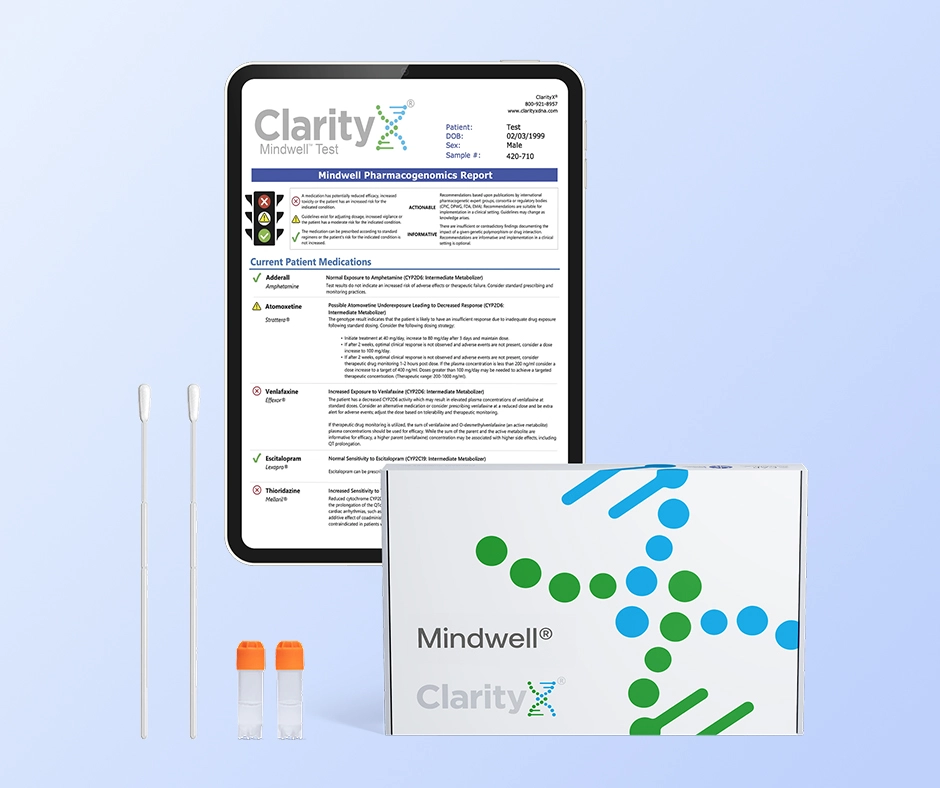Introduction
In the realm of mental health, finding effective treatments is paramount to improving the lives of individuals facing various conditions. Seroquel, a medication widely prescribed by healthcare professionals, has garnered attention for its diverse uses and benefits. Understanding the purpose of Seroquel is essential for both patients and medical practitioners to make informed decisions about its potential applications.
In this article, we embark on a journey to explore the uses and benefits of Seroquel. We’ll look into its mechanism of action, approved indications, and common side effects. Additionally, we investigate its role in treating schizophrenia, bipolar disorder, major depressive disorder, and anxiety disorders. We will also touch on off-label uses and emerging research related to Seroquel. By gaining a comprehensive understanding of this medication, we hope to shed light on its purpose and empower individuals to engage in collaborative discussions with healthcare providers. Join us as we dive into the world of Seroquel and uncover its potential to improve mental health and well-being.
Understanding Seroquel
Definition and Classification of Seroquel
Quetiapine, commonly known as Seroquel, is a versatile medication classified as a second-generation antipsychotic, a non-benzodiazepine anxiolytic, and a bipolar disorder medication.
Mechanism of Action
Quetiapine produces its effects by antagonizing dopamine D2 receptors, serotonin 5-HT2 receptors, and other targets in the brain. Dopamine D2 receptors are part of the dopamine system, which helps regulate various functions, including mood, motivation, and movement. By antagonizing these receptors, quetiapine blocks or reduces the activity of dopamine at these sites, leading to a decrease in dopamine-mediated signaling in the brain.
Serotonin 5-HT2 receptors are part of the serotonin system, which participates in the regulation of mood, emotions, and cognition. By antagonizing these receptors, quetiapine interferes with serotonin-mediated neurotransmission, resulting in a decrease in serotonin activity in certain regions of the brain.
The combined antagonistic action on dopamine D2 receptors and serotonin 5-HT2 receptors helps to modulate the neurotransmitter balance in the brain, which can have therapeutic effects in conditions such as schizophrenia, bipolar disorder, and depression.
Approved Uses and Indications
For Adults:
- Schizophrenia
- Bipolar I disorder: acute or adjunct (add-on) treatment of manic episodes associated with bipolar I disorder.
- Bipolar disorder: acute treatment of depressive episodes of both bipolar I and II disorder.
- Bipolar disorder maintenance: adjunctive treatment
- Major depressive disorder: adjunctive treatment
- Off-label uses: anxiety, borderline personality disorder, delirium, dementia, obsessive-compulsive disorder (OCD), post-traumatic stress disorder (PTSD), sleep, and substance abuse.
Off-label use of quetiapine is observed in geriatric patients, with a recommended maximum dose of 150 mg per day. Seroquel is sometimes used for managing severe behavioral or psychological symptoms of dementia (BPSD) in geriatric adults and in cases of Lewy body dementia that do not respond to other treatments. However, the use of quetiapine in the elderly carries a Black-Box Warning for increased risk of death.
For Pediatric Patients:
- Schizophrenia: aged 13 to 17 years
- Bipolar I disorder (acute manic episodes): aged 10 to 17 years.
- Off-label uses: aggressive behavior, attention deficit hyperactivity disorder (ADHD), autism spectrum disorder (ASD), conduct disorder, and oppositional defiant disorder.
Quetiapine is not approved for depression in pediatric patients due to the risk of suicidality.
Common Side Effects
- Abnormal dreams
- Agitation
- Anxiety
- Dizziness
- Drowsiness
- Dry mouth
- Headache
- Metabolic changes
- Pediatric side effect: Increased blood pressure
- Weight gain
Treating Schizophrenia and Bipolar Disorder
Seroquel's effectiveness in managing symptoms of schizophrenia
Two short-term trials, one for adults and one for youth ages 13-17, were done to determine efficacy of quetiapine on schizophrenia.
Successful treatment was based on the Positive and Negative Syndrome Scale (PANSS). The trial for adults showed that quetiapine extended-release tablets of 400 mg, 600 mg, and 800 mg once daily were superior to placebo at Day 42. The trial for adolescents (ages 13 to 17) showed that quetiapine dosing of 400 mg per day or 800 mg per day (in divided doses) were superior to placebo in treating schizophrenia.
This means that over a short duration, quetiapine, if dosed appropriately, may help with the treatment of schizophrenia.
One maintenance trial with adult patients was done. Patients were already stable on quetiapine when entering the trial. These patients were then randomized to placebo or their current quetiapine regimen of 400 to 800 mg/day. Patients nor doctors knew whether the patient was taking placebo or their quetiapine, a double-blind randomized trial. Relapse was measured using the PANSS Total score or the Clinical Global Impression - Improvement Scale (CGI-I). Patients on quetiapine extended-release tablets experienced significantly longer time to relapse than did patients on placebo.
Seroquel's role in treating bipolar disorder
Quetiapine was found to be superior to placebo in reducing acute manic episodes in adults with bipolar I disorder, as evidenced by several placebo-controlled trials. The studies utilized the Young Mania Rating Scale (YMRS) as a primary tool for assessing manic symptoms and showed that quetiapine, in the range of 400-800 mg/day, reduced YMRS total score significantly more than placebo. This was true both for monotherapy and as an adjunct to lithium or divalproex.
In children and adolescents (10-17 years), the efficacy of quetiapine for treating manic episodes was extrapolated from a placebo-controlled study where both 400 mg/day and 600 mg/day doses were found to be superior to placebo.
In terms of treating depressive episodes in bipolar disorder, quetiapine was shown effective in several 8-week trials, with the Montgomery-Asberg Depression Rating Scale (MADRS) as the primary rating instrument. Quetiapine (300 mg/day or 600 mg/day) resulted in a greater reduction in MADRS score than placebo. In these studies, no additional benefit was seen with the 600 mg dose.
As a maintenance treatment adjunct to lithium or divalproex, quetiapine increased the time to recurrence of any mood event in bipolar I disorder adult patients. This treatment effect was independent of any specific subgroup (assigned mood stabilizer, sex, age, race, most recent bipolar episode, or rapid cycling course).
Comparative analysis of Seroquel with other antipsychotic medications
Seroquel (quetiapine) is an atypical antipsychotic that is used to treat several conditions, including schizophrenia, bipolar disorder, and major depressive disorder. Here is how it compares to other antipsychotics:
- Efficacy: Clinical studies have shown that quetiapine is effective for schizophrenia, bipolar disorder, and major depressive disorder. However, its efficacy may be comparable to other atypical antipsychotic drugs such as risperidone, olanzapine, and aripiprazole. The choice of antipsychotic often depends on the specific symptoms a patient is experiencing, their overall health status, and their response to medication.
- Side effects: Quetiapine has a unique side effect profile. It can cause sedation, weight gain, and metabolic changes such as increases in blood sugar and cholesterol. However, it has a lower risk of extrapyramidal symptoms (movement disorders) compared to typical antipsychotics and some atypical antipsychotics.
- Indications: One of the advantages of quetiapine is its broad range of indications. It is one of the few antipsychotics approved for the treatment of both manic and depressive episodes in bipolar disorder, and it is also approved as an adjunctive treatment for major depressive disorder.
- Dosing: Quetiapine typically begins with twice daily dosing, although, daily dosing is available. Risperidone and olanzapine are both just once daily.
- Cost: quetiapine is available in a generic form, which makes it more affordable compared to newer, brand-name antipsychotics.
Managing Major Depressive Disorder and Anxiety Disorders
Seroquel as an adjunctive treatment for major depressive disorder
As an adjunctive treatment for major depressive disorder, MDD, Seroquel is used in combination with other antidepressant medications when initial treatments are not fully effective. This is not the first-line treatment but can be used if a person's depressive symptoms do not respond adequately to traditional antidepressant medications alone.
Quetiapine functions by altering the activity of certain natural substances in the brain, including dopamine and serotonin, which are neurotransmitters known to be involved in mood regulation. It is believed that by altering the balance of these chemicals, quetiapine can help to alleviate symptoms of depression.
The use of atypical antipsychotics like Seroquel for the treatment of MDD is not without controversy. These medications can come with significant side effects, including weight gain, sedation, and an increased risk of metabolic syndrome. As a result, the potential benefits must be carefully weighed against the potential risks in each individual case.
Clinical trials have demonstrated statistically significant improvements in symptoms of depression with the use of quetiapine as an adjunctive treatment to antidepressants. For instance, in one phase III trial, patients treated with 300mg/day of Seroquel in combination with antidepressants showed improved results compared to those on a placebo.
Quetiapine use is associated with various side effects, including sedation, weight gain, extrapyramidal symptoms, and abnormal laboratory results related to glucose, thyroid, and cholesterol metabolism. There is ongoing debate as to whether the benefits of adjunctive treatment with quetiapine for MDD outweigh these risks.
Seroquel's use in anxiety disorders and related conditions
According to a review of multiple randomized controlled trials (RCTs), Seroquel (quetiapine) may be effective in reducing symptoms of generalized anxiety disorder. In these studies, patients with generalized anxiety disorder responded significantly better to quetiapine than to a placebo. However, it is also noted that patients taking quetiapine were more likely to drop out of the trials due to adverse events, which included weight gain, sedation, and extrapyramidal side effects (movement disorders).
When quetiapine was compared with antidepressants, there was no significant difference in efficacy-related outcomes, suggesting that its effectiveness may be similar to that of antidepressants. However, more participants in the quetiapine groups dropped out due to adverse events, gained weight, and felt sedated.
Therefore, while quetiapine may be effective in treating symptoms of generalized anxiety disorder, its use must be weighed against its lower tolerability and the potential for side effects.
Efficacy and considerations for using Seroquel in mood disorders and anxiety
Efficacy considerations for using Seroquel (quetiapine) in mood disorders and anxiety involve evaluating the potential benefits of the medication against its potential risks and side effects.
In mood disorders like bipolar disorder, Seroquel is a well-established treatment option. Quetiapine is used in the treatment of both manic and depressive episodes associated with bipolar disorder, as well as for maintenance treatment in bipolar disorder to prevent the recurrence of episodes. The efficacy of Seroquel in these contexts is well-supported by clinical studies.
As for anxiety disorders, while some studies have shown that Seroquel can be effective, its use for this purpose is considered off-label, meaning the FDA has not approved quetiapine for this use. A review of several studies showed that patients with generalized anxiety disorder responded better to Seroquel than to a placebo, and its effectiveness might be similar to that of antidepressants.
However, the potential benefits of Seroquel must be weighed against its potential side effects. Some of the common side effects of Seroquel include drowsiness, dizziness, and dry mouth. More serious side effects can include weight gain, increases in blood sugar and cholesterol levels, and movement disorders. In some cases, patients may experience an increased risk of suicidal thoughts and behaviors, particularly in the first few months of treatment or when the dose is adjusted.
Seroquel can cause withdrawal symptoms if stopped suddenly, therefore discontinuing the medication may require the supervision of a healthcare professional.
Off-Label Uses and Emerging Research
Exploration of off-label uses of Seroquel
Off-label use means prescribing drugs for purposes not officially approved by regulatory agencies like the FDA. This is a legal and frequent practice in many areas of medicine.
Seroquel is often used off-label for several purposes including:
- Borderline Personality Disorder
- Dementia-related Psychosis
- Generalized Anxiety Disorder (GAD
- Insomnia
- Major Depressive Disorder (MDD)
- Obsessive-Compulsive Disorder (OCD)
- Post-Traumatic Stress Disorder (PTSD)
Potential benefits and risks in off-label use
Off-label prescribing can have potential benefits and risks, and it is important for both healthcare providers and patients to understand these before deciding to use a medication off-label.
Potential Benefits of Off-Label Prescribing
- More Treatment Options: Off-label use can provide additional treatment options for conditions that may not have many effective treatments available. This is especially beneficial in cases where standard treatments have not worked or cannot be used.
- Innovation and Discovery: Off-label use can lead to new discoveries about how a medication can be used. Many drugs have been found to have additional therapeutic benefits beyond their original intended use through off-label prescribing.
- Individualized Treatment: Off-label prescribing allows for more personalized medicine, as it allows doctors to tailor treatment to an individual patient's unique needs and circumstances.
Potential Risks of Off-Label Prescribing:
- Less Evidence: Off-label uses are not always supported by rigorous clinical trial evidence. While a drug may show promise for a certain condition, it may not have been thoroughly evaluated for that use, making the efficacy and safety profile less certain.
- Increased Risk of Adverse Effects: Every medication has potential side effects, and these risks may be less well-understood for off-label uses. The risk of side effects may also be higher if the off-label use involves higher dosages or longer durations of use than approved by regulatory bodies.
- Legal and Ethical Issues: In some cases, there may be legal and ethical issues around off-label prescribing, especially if something goes wrong. Providers must obtain informed consent and ensure that patients understand that the use is off-label.
- Cost and Insurance Coverage: Insurance companies may not cover the cost of medications for off-label uses, which could make these treatments expensive for patients.
When considering off-label use a thorough discussion about the potential benefits and risks can be helpful. The decision should be based on the best available evidence, the individual patient's needs and preferences, and careful consideration of potential side effects and monitoring requirements.
Considering Side Effects and Safety
Common side effects of Seroquel
Side effects can vary from person to person, but some of the most common side effects include:
- Blurred vision: This is typically temporary and goes away with continued use of the medication.
- Constipation: Eating a diet high in fiber, drinking plenty of water, and getting regular exercise can help manage this side effect.
- Dizziness: This can happen particularly when standing up from a sitting or lying position.
- Drowsiness: This is one of the most common side effects, and it can affect a person's ability to drive or operate machinery. Drowsiness is especially common when a person first starts taking the medication, but it often lessens over time.
- Dry mouth: Many people experience this side effect, and it can be managed by drinking water, chewing gum, or using saliva substitutes.
- Increased appetite: This can lead to weight.
- Upset stomach or nausea: Taking the medication with food can often help with these symptoms.
- Weight gain: This is a significant side effect of quetiapine and can lead to other health issues like diabetes or heart disease. It is important to monitor weight, eat a balanced diet, and get regular exercise while taking this medication.
Rare but severe side effects and warnings
Quetiapine has several rare but severe side effects that users should be aware of:
- Changes in heart rhythm: Quetiapine can cause a change in the heart's rhythm, which might be dangerous for people with certain heart conditions. Symptoms can include palpitations or feeling like your heart is racing.
- Low white blood cell count: This can increase the risk of infections. Symptoms can include fever, sore throat, flu-like symptoms, or other signs of infection.
- Metabolic changes: Quetiapine can cause changes in metabolism, leading to high blood sugar, diabetes, increased cholesterol, or weight gain. Symptoms of high blood sugar can include increased thirst, frequent urination, and unexplained weight loss.
- Neuroleptic Malignant Syndrome (NMS): This is an exceedingly rare but potentially life-threatening condition characterized by fever, confusion, rapid heartbeat, and muscle stiffness.
- Severe constipation or stomach pain
- Suicidal thoughts: In some people, especially those under 24 years old, quetiapine can increase the risk of suicidal thoughts and behaviors. Any unusual changes in mood or behavior should be reported to a healthcare provider immediately.
- Tardive dyskinesia: This is a movement disorder that can cause involuntary movements, especially in the face. It can sometimes be irreversible, even after stopping the medication.
Warnings associated with quetiapine include:
- Elderly patients with dementia-related psychosis: Quetiapine carries a black box warning (the most serious type of warning issued by the FDA) stating that it can increase the risk of death in elderly patients with dementia-related psychosis. It is not approved for this use although it is used for this often.
- Pregnancy and breastfeeding: Quetiapine can potentially have harmful effects on a developing fetus or a breastfed baby. Women who are pregnant, planning to become pregnant, or breastfeeding should discuss the potential risks with their healthcare provider.
Precautions and considerations for use in specific populations
Certain populations may require special consideration when it comes to the use of quetiapine.
- Cardiovascular disease: Quetiapine can cause changes in heart rhythm, which could be dangerous for people with certain heart conditions. This medication should be used with caution in patients with known cardiovascular disease, history of heart attack or stroke, or conditions that predispose them to low blood pressure.
- Children: Quetiapine is not approved for use in children under the age of 10. It may be used in adolescents, depending on indication.
- Diabetes or at risk for diabetes: Quetiapine can cause changes in metabolism, leading to high blood sugar or diabetes.
- Elderly patients: Quetiapine carries a black box warning stating that it can increase the risk of death in elderly patients with dementia-related psychosis. It is not approved for this use.
- Epilepsy: Seroquel, at higher doses, may increase the risk of seizures. In addition, many seizure medications may interact with Seroquel.
- Liver disease: Quetiapine is metabolized by the liver, and liver disease can affect how this medication is processed in the body. Dosage adjustments may be necessary for patients with liver disease.
- Pregnant and breastfeeding women: Quetiapine can potentially have harmful effects on a developing fetus or a breastfed baby. Women who are pregnant, planning to become pregnant, or breastfeeding should discuss the potential risks and benefits with their healthcare provider. The FDA classifies quetiapine as a Category C drug for pregnancy, meaning animal studies have shown an adverse effect on the fetus and there are no adequate and well-controlled studies in humans, but potential benefits may warrant use of the drug in pregnant women despite potential risks.
- Substance abuse history: Quetiapine has been associated with misuse and addiction in people with a history of substance abuse. Caution should be exercised when prescribing this medication to patients with a known history of substance abuse. (Note that misuse of Seroquel may be due to psychological or physical dependence on the medication rather than specifically addiction. Patients may rely on the medication for their treatment for sleep and may feel unable to function without it. Patients may experience discontinuation syndrome when stopping quetiapine and so it should be stopped slowly under the supervision of a physician.)
Conclusion
In conclusion, Seroquel (quetiapine) is a versatile medication with demonstrated effectiveness in treating conditions such as schizophrenia, bipolar disorder, major depressive disorder, and certain anxiety disorders. Side effects, though, vary between people. Through informed discussions with healthcare providers, individuals can make informed decisions about Seroquel's use in improving mental health. Knowing how your body will react to quetiapine can help your provider determine if this medication is the best option for you. The Mindwell test with ClarityX looks at your genes to help you and your prescriber determine which medication will likely work best with the fewest side effects.
Looking for help determining the best medication options for your specific health concern? See how ClarityX can help!
Resources Used
- DailyMed - QUETIAPINE EXTENDED RELEASE- quetiapine tablet, film coated, extended release (nih.gov)
- https://bmcpsychiatry.biomedcentral.com/articles/10.1186/s12888-021-03220-3
- https://online.epocrates.com/diseases/406/schizophrenia
- https://online.epocrates.com/diseases/488/bipolar-disorder-in-adults
- https://online.epocrates.com/diseases/783/bipolar-disorder-in-children
- https://online.epocrates.com/drugs/1229/quetiapine
- https://pubmed.ncbi.nlm.nih.gov/21154392/
- https://www.accessdata.fda.gov/drugsatfda_docs/label/2004/20639se1-017,016_seroquel_lbl.pdf
- https://www.drugs.com/pro/seroquel.html
- Use of quetiapine in children and adolescents - PubMed (nih.gov)
- https://www.uspharmacist.com/article/atypical-antipsychotics-safety-and-use-in-pediatric-patients





